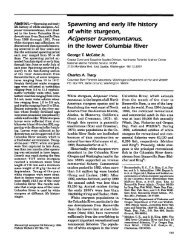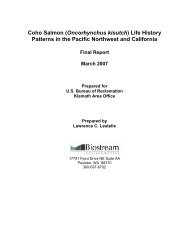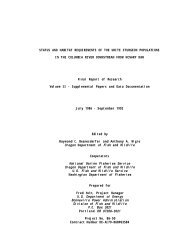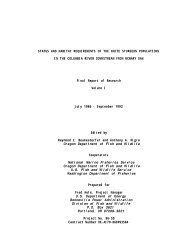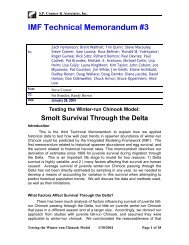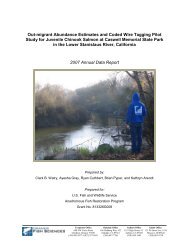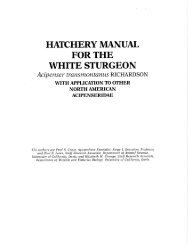STATE OF THE INDUSTRM REPORT - Outdoor Industry Association
STATE OF THE INDUSTRM REPORT - Outdoor Industry Association
STATE OF THE INDUSTRM REPORT - Outdoor Industry Association
Create successful ePaper yourself
Turn your PDF publications into a flip-book with our unique Google optimized e-Paper software.
accessible recreation is the best solution<br />
It’s clear that physical activity is a contributor to health. Studies by the Centers<br />
for Disease Control and Prevention (CDC) indicate that physical activity has<br />
proven absolutely invaluable in helping people lose weight. Yet more than 50<br />
percent of U.S. adults don’t get enough physical activity to recognize health<br />
benefits and 26 percent are not active at all. More than a third of young people<br />
in grades nine through 12 do not regularly engage in vigorous physical activity.<br />
Daily participation in high school physical education classes dropped from 42<br />
percent in 1991 to 28 percent in 2003.<br />
“creation of or enhanced access to places for physical<br />
activity, combined with informational outreach, has<br />
been shown to produce a 48 percent increase<br />
in frequency of physical activity.”<br />
This trend toward inactivity is a major contributor to the nation’s obesity crisis—<br />
and it’s not simply a matter of health. Obesity’s impact on the U.S. economy<br />
is greater than many people realize. A 2003 study by the American Journal of<br />
Managed Care found that obesity is a significant contributor to expenditures<br />
for physician services. Specifically, the study’s authors said a one percent<br />
increase in the percentage of the population who are obese yielded a 0.2<br />
percent increase in expenditures. The national medical expenses attributed<br />
to overweight and obesity accounted for 9.1 percent of total U.S. medical<br />
expenditures in 1998 and has risen considerably (excludes indirect costs.)<br />
Between 1998 and 2004, the number of states with obesity rates greater than<br />
20 percent has grown from 7 to 43.<br />
When people are active it not only makes them healthier; it also reduces the<br />
amount of money they, and the federal government, spend on health insurance,<br />
doctors and medicine. Study after study suggests that the best way to get people<br />
active is to make recreation accessible. When there are parks, greenways, trail<br />
systems and playgrounds within reach of their homes, people exercise more.<br />
In a study published by the CDC, creation of or enhanced access to places<br />
for physical activity led to a 25 percent increase in the percentage of people<br />
exercising on three or more days per week. A group of studies reviewed in the<br />
American Journal of Preventive Medicine showed that “creation of or enhanced<br />
access to places for physical activity combined with informational outreach”<br />
produced a 48 percent increase in frequency of physical activity.<br />
// www.outdoorindustry.org<br />
<br />
<br />
<br />
<br />
<br />
<br />
<br />
<br />
<br />
<br />
<br />
<br />
<br />
<br />
the complete case for recreation<br />
How important is recreation to the social fabric of<br />
the United States? To provide a complete picture,<br />
<strong>Outdoor</strong> <strong>Industry</strong> Foundation (OIF) has undertaken<br />
the first ever Recreation Economy Study to quantify<br />
the direct and indirect economic impact of recreation<br />
in the United States.<br />
The graphs below show how much money recreationalists<br />
spend on two categories in select activities.<br />
Clearly, the economic impact of active outdoor<br />
recreation is far greater than the numbers shown by<br />
simple sales figures. The OIF Recreation Economy<br />
Study will be available in late spring 2006.<br />
<br />
<br />
<br />
<br />
<br />
trail running, day hiking, backpacking, mountain climbing<br />
paved road, biking - single track, dirt road<br />
skiing, snowboarding, snowshoeing, telemark skiing,<br />
cross-country/nordic<br />
outdoor swimming, paddlesports - kayaking,<br />
canoeing, rafting<br />
car camping, tent camping, rustic lodges, RV camping<br />
Source Southwick Associates (economic analysis) and Harris Interactive<br />
(survey data), Preliminary Data for OIF Recreation Economy Study



